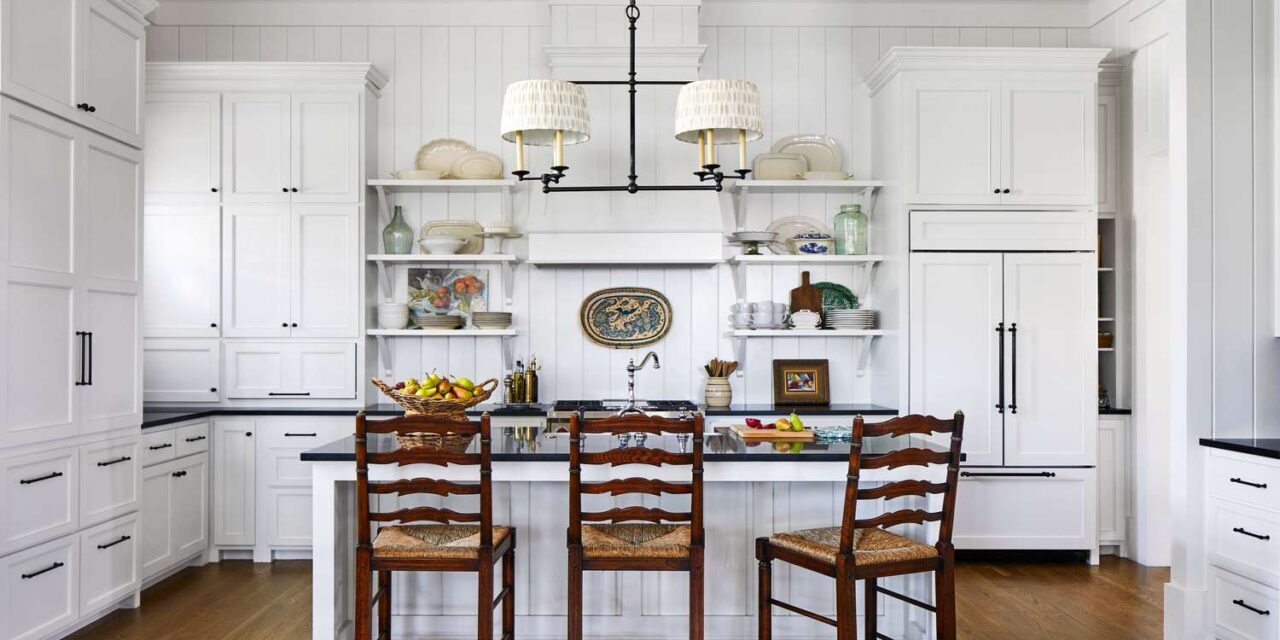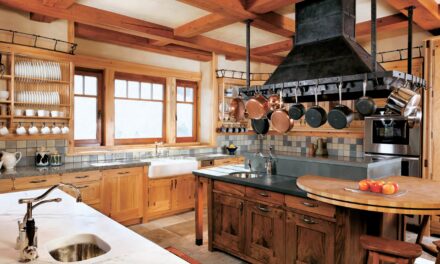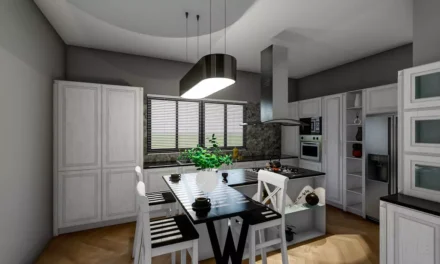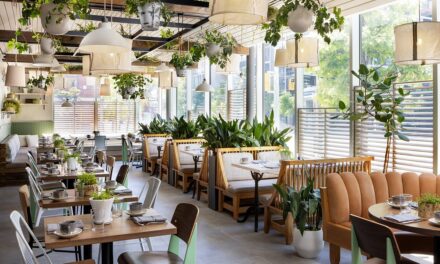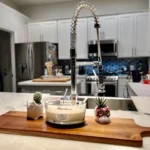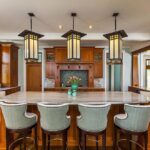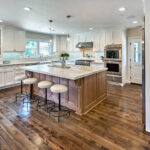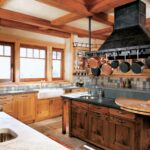The kitchen is more than just a place for cooking—it’s the heart of the home, where flavors, stories, and traditions intertwine. Every home kitchen has its unique character, reflecting not only the design and layout of the space but also the personalities and habits of those who gather within its walls. Whether it’s the warmth of a family meal or the quiet moments of morning coffee, the kitchen is a place of comfort, creativity, and connection.
When we think of a kitchen from home, we imagine a space that is familiar and personal. The scents of cherished recipes fill the air, and every utensil, countertop, and appliance tells a story of meals shared and memories created. It’s not about the latest trends or the most luxurious finishes—it’s about crafting a space that works for the household’s needs and makes life a little easier and more enjoyable.
From rustic, cozy nooks to sleek, modern culinary hubs, the kitchen remains central to the rhythm of home life. Here, we find a balance between practicality and personality, where design and function unite to create a space that nurtures both body and soul.
Culinary Comforts: Designing the Perfect Kitchen from home
This guide will walk you through the essentials of creating a kitchen that not only meets your culinary needs but also serves as a comforting and stylish space. For more information visit here.
Table of Contents
Understanding Your Needs
Before diving into design elements, it’s crucial to assess your specific needs and preferences. Consider the following questions:
- How do you use your kitchen? Do you cook daily, entertain frequently, or need a space for multiple people to work at once?
- What are your cooking habits? Are you a gourmet chef, a busy parent, or someone who enjoys quick and simple meals?
- Do you need special accommodations? For example, accessibility features or dedicated spaces for specific appliances.
Setting a Budget
A well-defined budget helps guide your choices and avoid overspending. Break down your budget into categories such as cabinetry, countertops, appliances, flooring, and lighting. Allocate more funds to elements that have a significant impact on functionality and longevity, like high-quality appliances and durable countertops.
Layout and Flow
The layout is fundamental in creating a functional kitchen. Here are some popular kitchen from home layouts and their benefits:
- U-Shaped Layout: This design features cabinetry and appliances along three walls, creating a U-shape. It’s ideal for maximizing counter space and creating a streamlined workflow.
- L-Shaped Layout: With cabinetry and appliances along two adjacent walls, this layout is perfect for smaller spaces and open-concept homes. It allows for efficient movement and interaction.
- Island Layout: An island can serve as additional counter space, storage, and even a casual dining area. It works well in larger kitchens and can be customized with features like a sink or cooktop.
- Galley Layout: This design features two parallel counters with a walkway in between. It’s efficient for cooking and provides a clear path for movement.
- Open-Concept Layout: Combining the kitchen with adjacent living or dining areas creates a spacious, multifunctional environment. It’s great for entertaining and keeping an eye on family activities.
Choosing Materials and Finishes
Selecting the right materials is essential for durability, maintenance, and aesthetics. Here are some popular options:
- Countertops: Granite, quartz, marble, and butcher block are common choices. Granite and quartz are highly durable and low-maintenance, while marble offers a classic look but requires more upkeep. Butcher block adds warmth and is ideal for cutting and prep work.
- Cabinetry: Choose between solid wood, plywood, or MDF. Solid wood is sturdy and timeless, while MDF is cost-effective and resistant to warping. Consider the finish, whether painted, stained, or a natural wood veneer.
- Backsplashes: Subway tiles, glass tiles, and patterned ceramics are popular choices. Backsplashes not only protect walls from splashes but also add a decorative element to the kitchen from home.
- Flooring: Options include hardwood, tile, laminate, and vinyl. Hardwood offers warmth and character, while tile is durable and easy to clean. Laminate and vinyl are budget-friendly and come in various styles.
Cabinetry and Storage Solutions
Efficient storage is key to a well-organized kitchen from home. Consider incorporating the following features:
- Pull-Out Shelves: These maximize access to deep cabinets and reduce the need to reach or dig for items.
- Lazy Susans: Ideal for corner cabinets, lazy Susans make it easier to access items stored in the back.
- Drawer Organizers: Keep utensils, cutlery, and other kitchen tools neatly arranged and easily accessible.
- Pantry Storage: A walk-in or pull-out pantry can significantly increase storage capacity and help keep dry goods organized.
Lighting
Proper lighting enhances both functionality and ambiance. A well-lit kitchen from home typically includes:
- Task Lighting: Focused lighting over work areas such as countertops, sinks, and stoves. Under-cabinet lighting is a popular choice.
- Ambient Lighting: General lighting that provides overall illumination, such as ceiling fixtures or recessed lighting.
- Accent Lighting: Decorative lighting that highlights architectural features or adds visual interest, like pendant lights over an island or under-cabinet lighting to showcase a backsplash.
Appliances
When choosing appliances, consider both functionality and style:
- Refrigerators: Options range from compact models to side-by-side or French door refrigerators. Choose one that fits your space and meets your storage needs.
- Stoves and Ovens: Gas, electric, and induction cooktops each have their advantages. Consider a double oven if you frequently cook large meals or entertain.
- Dishwashers: Look for energy-efficient models with features that fit your household’s needs, such as adjustable racks or quiet operation.
- Microwaves and Range Hoods: Built-in microwaves save counter space, and a range hood is essential for ventilation and removing cooking odors.
Personal Touches
Add personality to your kitchen from home with custom details and decor:
- Color Scheme: Choose colors that reflect your style and create a cohesive look. Classic white, bold blues, and warm greys are popular choices.
- Backsplash Designs: Incorporate patterns, textures, or colors that complement your countertops and cabinetry.
- Open Shelving: Display attractive dishware, cookbooks, or decorative items. It adds character and can make everyday items easily accessible.
- Plants and Accessories: Fresh herbs in pots, decorative bowls, and unique kitchen gadgets can add a personal touch and make the space feel inviting.
Sustainability and Efficiency
Incorporate eco-friendly practices and energy-efficient features:
- Energy-Efficient Appliances: Look for appliances with the ENERGY STAR® label to reduce energy consumption and lower utility bills.
- Water-Efficient Fixtures: Install low-flow faucets and dishwashers to conserve water.
- Sustainable Materials: Opt for materials like reclaimed wood, bamboo, or recycled glass to reduce environmental impact.
- Proper Ventilation: Ensure your kitchen from home has adequate ventilation to improve indoor air quality and reduce humidity.
Planning and Execution
Once you have a clear vision, create a detailed plan:
- Floor Plan: Draft a layout that includes cabinetry, appliances, and work areas. Consider flow and accessibility.
- Timeline: Establish a timeline for each phase of the project, from design to installation.
- Professional Help: Depending on the complexity of your design, you may need to hire professionals such as a kitchen designer, contractor, or plumber.
- DIY vs. Professional: Decide which aspects of the project you can tackle yourself and where you may need professional assistance.
Maintenance and Care
To keep your kitchen from home looking and functioning its best:
- Regular Cleaning: Clean countertops, appliances, and flooring regularly to prevent buildup and maintain hygiene.
- Routine Maintenance: Check and maintain appliances, seals, and fixtures to ensure they are in good working condition.
- Upkeep: Address any repairs or updates promptly to avoid larger issues down the line.
Incorporating Technology
Modern kitchen from home increasingly integrate smart technology to enhance convenience and efficiency. Consider the following tech-savvy additions:
- Smart Appliances: Devices like smart refrigerators with touch screens, smart ovens with remote controls, and smart dishwashers can make kitchen from home tasks more manageable. Features such as recipe suggestions, automatic temperature adjustments, and maintenance alerts add a new level of convenience.
- Voice-Activated Controls: Voice assistants like Amazon Alexa or Google Assistant can control smart appliances, set timers, or provide cooking tips. Incorporating these systems can streamline kitchen operations and make multitasking easier.
- Smart Lighting: Automated lighting systems can adjust brightness and color temperature based on the time of day or specific tasks. Some systems allow remote control via smartphone apps or voice commands.
- Integrated Charging Stations: Built-in USB ports or wireless charging pads in countertops or cabinetry help keep your devices powered without cluttering the space.
Creating a Functional Work Triangle
The work triangle is a design principle that optimizes kitchen from home workflow. It involves positioning the three primary work areas—the sink, stove, and refrigerator—so that they form a triangular layout. This setup minimizes unnecessary movement and improves efficiency:
- Sink: Ideally positioned between the stove and refrigerator, making it accessible for food prep and cleanup.
- Stove: Centrally located for easy access to both the sink and refrigerator, allowing smooth cooking processes.
- Refrigerator: Placed in a way that’s convenient for both accessing ingredients and moving to the prep area.
Ergonomics and Accessibility
Designing for comfort and accessibility ensures that your kitchen from home is not only functional but also user-friendly:
- Counter Height: Standard counter height is around 36 inches, but adjustable or varied heights can accommodate different needs. For instance, a lower counter or pull-out work surface can help with accessibility.
- Cabinet Accessibility: Include features like pull-down shelves or lift-up doors to reach high cabinets easily. For those with mobility challenges, consider installing drawers at waist height rather than deep cabinets.
- Flooring Considerations: Choose slip-resistant flooring materials and consider adding anti-fatigue mats in areas where you’ll be standing for long periods.

Integrating Dining and Entertaining Spaces
Many modern kitchen from home are designed to serve multiple functions, including dining and entertaining:
- Breakfast Nooks: A built-in bench or small dining table can create a cozy spot for casual meals and family gatherings.
- Bar Stools and Counter Seating: Incorporate a breakfast bar or island with seating for quick meals and socializing. Ensure there’s ample legroom and that the seating height complements the counter height.
- Entertainment Areas: For those who entertain frequently, consider adding features like a wine cooler, a built-in coffee station, or even a small bar area.
Safety Features
Safety is a crucial aspect of kitchen from home design:
- Childproofing: If you have young children, include features such as cabinet locks, rounded corners on countertops, and stove knobs that are difficult for small hands to turn.
- Ventilation: Ensure proper ventilation to prevent the buildup of cooking fumes and reduce the risk of fire. A well-functioning range hood or exhaust fan is essential.
- Non-Slip Mats: Use non-slip mats or rugs in front of the sink and stove to reduce the risk of slipping on wet floors.
Sustainable Practices
Incorporating eco-friendly practices in your kitchen from home design not only benefits the environment but can also improve your home’s efficiency:
- Recycling and Composting: Designate space for recycling bins and composting containers. Incorporate these into cabinetry or have them easily accessible.
- Energy-Efficient Lighting: Use LED bulbs, which consume less energy and have a longer lifespan than traditional incandescent bulbs.
- Water Conservation: Install water-saving faucets and appliances. Consider a water filtration system to reduce plastic waste from bottled water.
Designing for Future Changes
A well-designed kitchen from home should accommodate potential future changes:
- Flexible Layout: Consider a layout that can adapt to changing needs, such as adding or removing an island or adjusting storage options.
- Upgradable Features: Choose components that can be easily updated, like modular cabinetry or interchangeable hardware.
- Future-Proof Appliances: Invest in appliances that are compatible with future technology or upgrades.
Personalization and Style
Personal touches make your kitchen from home uniquely yours:
- Custom Cabinetry: Tailor cabinetry to fit your style, whether it’s classic, modern, or rustic. Custom details like glass-front doors or intricate moldings can add character.
- Unique Fixtures: Choose distinctive hardware, faucets, and light fixtures that reflect your personal style and make a statement.
- Artwork and Decor: Incorporate artwork, decorative pieces, or personal photos to make the space feel more inviting and reflective of your tastes.
Incorporating Green Spaces
Bringing a touch of nature into your kitchen from home can enhance both aesthetics and functionality:
- Indoor Herb Garden: A small herb garden on the windowsill or countertop provides fresh ingredients and adds a splash of greenery.
- Potted Plants: Choose low-maintenance plants that thrive in kitchen environments, such as succulents or peace lilies, to add natural beauty and improve air quality.
- Natural Materials: Incorporate materials like bamboo, reclaimed wood, or stone to create a connection to nature.
Home Office Integration
Incorporate a small home office or study area into your kitchen from home if you need a multi-functional space:
- Desk Space: Designate a corner with a compact desk or built-in work area. Ensure it has adequate lighting and is separate from food preparation areas.
- Storage Solutions: Include shelves or cabinetry for office supplies and documents. Keep the area organized and clutter-free to maintain a productive environment.
Designing for Families
Consider the needs of all family members when designing your kitchen from home:
- Child-Friendly Features: Install lower countertops or pull-out shelves for easy access by children. Include safety locks on cabinets and drawers.
- Teen and Adult Needs: Create separate spaces for homework, hobbies, or meal prep. Ensure the kitchen is a versatile space that accommodates various activities.
- Multi-Generational Design: If multiple generations live together, incorporate features that cater to different needs, such as adjustable countertop heights and easy-to-reach storage.
Choosing the Right Contractor
Selecting a skilled contractor is crucial for a successful kitchen from home renovation:
- Experience and Reputation: Look for contractors with a proven track record in kitchen design and renovation. Check references and read reviews.
- Detailed Estimates: Obtain detailed estimates that cover all aspects of the project, including labor, materials, and any additional costs.
- Communication: Choose a contractor who communicates clearly and is responsive to your
DIY vs. Professional Installation
Decide which aspects of the kitchen from home design you can handle yourself and where professional help is needed:
- DIY Projects: Simple tasks like painting, installing backsplash tiles, or assembling furniture can be tackled as DIY projects. Ensure you have the necessary skills and tools.
- Professional Installation: Complex tasks such as plumbing, electrical work, and custom cabinetry are best left to professionals. Proper installation is crucial for both functionality and safety.
Post-Installation Adjustments
After the kitchen from home is installed, take time to make any necessary adjustments:
- Functional Testing: Test all appliances and fixtures to ensure they are working correctly. Address any issues promptly.
- Final Touches: Add final decor elements, such as artwork or decorative accessories, to personalize the space and complete the look.
- Feedback and Adjustment: Live with your new kitchen for a while and observe how it functions. Make adjustments as needed to improve usability and comfort.
Inspiration and Trends
Stay inspired by current kitchen from home design trends and innovations:
- Sustainable Design: Emphasize eco-friendly materials and energy-efficient appliances. Trends like biophilic design, which incorporates natural elements, are gaining popularity.
- Bold Colors and Patterns: Experiment with vibrant colors, unique tile patterns, or statement-making backsplashes to add personality and flair to your kitchen.
- Minimalist Aesthetics: Clean lines, simple cabinetry, and a clutter-free design create a modern and sophisticated look.
- Smart Technology: Explore new smart kitchen gadgets and systems that enhance convenience and efficiency.
To sum up
A fulfilling adventure that calls for meticulous preparation, inventiveness, and attention to detail is creating the ideal kitchen from home design. You may design a room that enhances your everyday life and fulfils your functional demands while also reflecting your style and personal preferences by taking into account elements like layout, materials, technology, and personal preferences. These rules and recommendations will support you in creating a stunning, functional, and uniquely yours kitchen that you’ll love for years to come, whether you’re building a new kitchen or remodelling an old one.

